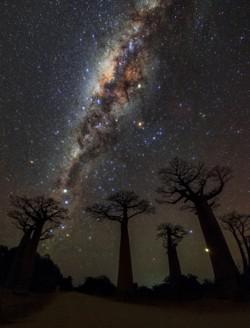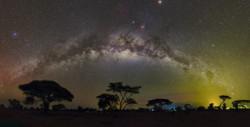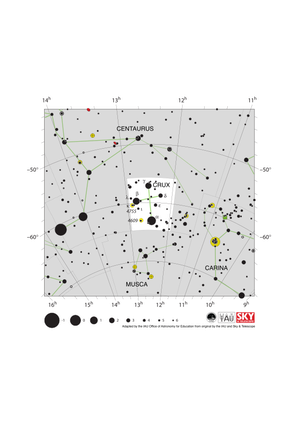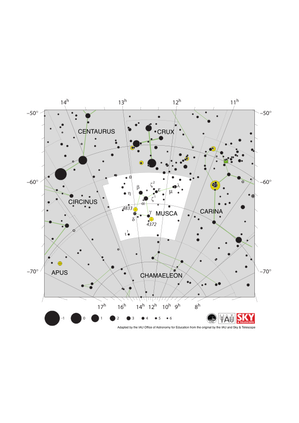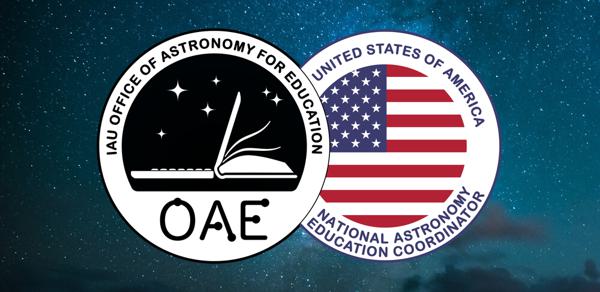Glossary term: 南十字星
Description: 南十字星是南半球星座南十字座的俗稱。它有五顆肉眼可見的恆星,形成一個長十字,結構緊湊,易於辨認。南十字座是 88 個官方星座中覆蓋天球面積最小的星座。其中最亮的恆星 alpha Crucis 是一個三星系統,而 beta Crucis 則是一顆造父變星。南十字座還包含一個令人驚嘆的疏散星團——寶盒星團(NGC 4755)。南十字座可以用來幫助尋找南方和天體的南極,它的圖案也出現在澳大利亞、巴西、新西蘭、巴布亞新幾內亞和薩摩亞的國旗上。
Related Terms:
See this term in other languages
Term and definition status: The original definition of this term in English have been approved by a research astronomer and a teacher The translation of this term and its definition is still awaiting approval
This is an automated transliteration of the simplified Chinese translation of this term
The OAE Multilingual Glossary is a project of the IAU Office of Astronomy for Education (OAE) in collaboration with the IAU Office of Astronomy Outreach (OAO). The terms and definitions were chosen, written and reviewed by a collective effort from the OAE, the OAE Centers and Nodes, the OAE National Astronomy Education Coordinators (NAECs) and other volunteers. You can find a full list of credits here. All glossary terms and their definitions are released under a Creative Commons CC BY-4.0 license and should be credited to "IAU OAE".
If you notice a factual or translation error in this glossary term or definition then please get in touch.
Related Media
半人馬座-豺狼座-南十字座全景:半人馬座馱著野獸,沿銀河馳騁
Credit: Uwe Reichert/IAU OAE
License: CC-BY-4.0 Creative Commons 姓名標示 4.0 國際 (CC BY 4.0) icons
猴麵包樹大道上空的銀河
Credit: Amirreza Kamkar/IAU OAU
License: CC-BY-4.0 Creative Commons 姓名標示 4.0 國際 (CC BY 4.0) icons
安波塞利國家公園上空的銀河拱門
Credit: Amirreza Kamkar/IAU OAE
License: CC-BY-4.0 Creative Commons 姓名標示 4.0 國際 (CC BY 4.0) icons
夜空中最亮的星
Credit: Giorgia Hofer/IAU OAE
License: CC-BY-4.0 Creative Commons 姓名標示 4.0 國際 (CC BY 4.0) icons
赤道銀河
Credit: Giorgia Hofer/IAU OAE
License: CC-BY-4.0 Creative Commons 姓名標示 4.0 國際 (CC BY 4.0) icons
Related Diagrams
Crux Constellation Map
Credit: Adapted by the IAU Office of Astronomy for Education from the original by IAU/Sky & Telescope.
License: CC-BY-4.0 Creative Commons 姓名標示 4.0 國際 (CC BY 4.0) icons
Musca Constellation Map
Credit: Adapted by the IAU Office of Astronomy for Education from the original by the IAU and Sky & Telescope
License: CC-BY-4.0 Creative Commons 姓名標示 4.0 國際 (CC BY 4.0) icons

